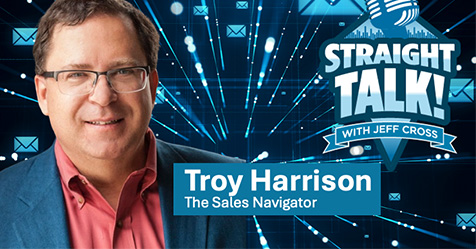In today’s competitive world, social media is a key tool for cleaning businesses to reach more people and boost their brand visibility. Social media posts can help your business attract new clients, strengthen ties with current customers, and create a positive brand image. It allows direct communication with your audience for quick interaction and feedback.
With all the benefits of social media, it may be tempting to pick a platform and immediately start posting. But to ensure the greatest success in reaching your goals, you need to create a social
media strategy first.
Identifying your target market
For your commercial cleaning business to succeed on social media, it’s crucial to identify your target market accurately. Consider whether you want to attract small businesses, large corporations,
or perhaps companies within specific industries such as healthcare, education, or hospitality. By pinpointing your potential clients, you can customize your social media strategies to engage
more effectively with them.
Research plays a vital role in understanding where your audience spends their time online. Different demographics tend to favor particular social media platforms. For instance, LinkedIn might be more suitable for connecting with professionals from larger businesses while Instagram and Facebook could be ideal for reaching small business owners.
Once you’ve identified your target market and researched their online habits, you can begin crafting messages that resonate with their needs and interests. Your social media content should explain how your services can benefit their specific industry and help solve their challenges. This approach will not only grab their attention, but also position your business as the go-to
solution for their cleaning needs.
Setting clear objectives
Once you understand your audience and the message you want to convey, your next step is to set clear objectives for your social media efforts. Ask yourself what you want to achieve—whether
it’s increasing brand awareness, generating leads, enhancing customer engagement, or perhaps all of the above. Use the SMART criteria to establish your goals.
- Specific: Define your objectives with clarity. Instead of aiming to “increase visibility,” target a specific outcome such as “grow our Instagram followers by 20%.”
- Measurable: Ensure that your goals are quantifiable. For instance, if your objective is lead generation, decide on a specific number of leads you aim to achieve through your social media campaigns.
- Achievable: Your goals should be realistic and attainable within the resources, time, and budget you have.
- Relevant: Your objectives must align with your overall business goals and the needs of your target market. For example, focusing on Snapchat is pointless if your target audience primarily uses LinkedIn.
- Time-bound: Set deadlines for your goals to maintain momentum and focus. Whether it’s achieving a certain follower count within three months or launching a campaign by a specific date, time constraints help keep your efforts on track.
By setting SMART goals for your social media strategy, you can create a focused plan, track your progress effectively, and adjust your tactics as needed to achieve the best results for your
commercial cleaning company.
Choosing the right platforms
Choosing the right platforms for your social media strategy is critical to its success. At E2E Cleaning, we focus our efforts primarily on LinkedIn, Facebook, and Google My Business for
reaching our commercial clientele effectively. Each of these platforms offers unique benefits and opportunities for engagement.
- LinkedIn: Ideal for B2B communications, LinkedIn allows us to connect with professionals and businesses in our target industries. It’s an excellent platform for showcasing our expertise, sharing industry insights, and networking with potential clients.
- Facebook: Facebook’s vast user base and advanced targeting options make it a powerful tool for reaching a wide range of businesses. Its features support various content types, facilitating engagement through posts, stories, and paid advertisements.
- Google My Business: An essential platform for local SEO, Google My Business helps increase our visibility in local search results. It offers a place for clients to review our services, boosting our reputation and attracting new business.
When selecting the platforms that best match your audience and objectives, consider where your target market spends its time online and the
nature of your content. For instance:
- Instagram is great for visual storytelling and can be effective if your cleaning services offer visually appealing results or if you wish to highlight your team and work culture.
- X, formerly known as Twitter, allows for quick updates and interactions, making it suitable for companies looking to engage in industry conversations and offer timely customer service.
Select platforms that align with your strategic goals while offering the best potential for reaching and engaging your targeted audience. Always weigh each platform’s pros and cons against your
objectives and resources to ensure an optimal mix for your social media strategy.
Creating engaging content
Engaging content is crucial for social media success. Video content reigns supreme in today’s digital world, offering vast opportunities to boost reach and engagement. Short, compelling videos showcasing cleaning transformations can captivate audiences. On LinkedIn, detailed articles establish authority in the cleaning industry. Valuable insights, employee spotlights, and live interactions—such as Q&A sessions—resonate well with professionals, fostering trust and humanizing your brand.
A content calendar ensures a consistent and strategic approach to content creation, driving growth and engagement.
Listening and building relationships
Building meaningful relationships by engaging directly with followers—whether through responding to comments, hosting Q&A sessions, or sharing customer testimonials—signals to
your potential and current clients that their opinions and satisfaction matter. This direct interaction not only humanizes your brand but also fosters a sense of community and loyalty.
Social listening is crucial for understanding customer needs and improving services. Monitor social media for brand mentions and industry keywords to gain valuable insights. Use real-time feedback to address concerns, adapt strategies, and meet audience expectations. Utilize tools that streamline tracking and analysis across platforms, ensuring relevance and responsiveness to your company’s evolving needs.
Measuring success
Key metrics like engagement rates, website traffic, and conversions show the effectiveness of your social media strategy. Tracking these metrics guides your focus on what matters most.
Numerous tools can help you streamline the process of monitoring and analyzing your social media performance. Hootsuite, Sprout Social, and Google Analytics offer comprehensive functionalities to track performance across platforms, analyze audience behavior, and measure conversion rates. These tools can help identify which types of content resonate best with your audience and which platforms are most effective at driving your desired outcomes.
Refine your strategy with performance data through testing, learning, and adapting. If video content on Instagram drives engagement but not website visits, adjust your call-to-action or
try different formats to boost clicks. Compare content types, posting times, and engagement methods to optimize your social media strategy. Engage dynamically with your social media audience by staying responsive to performance data.
Paying for ads
Investing in paid social media advertising is a critical component of a comprehensive social media marketing strategy. Beyond the limitations of organic reach, paid ads provide the leverage to target specific demographics with precision, ensuring your message reaches the right audience at the right time. Using video content in these ads significantly enhances engagement rates, as
videos are more likely to capture attention and convey your message effectively within seconds.
Additionally, innovative ad formats—such as lead generation forms directly within platforms such as LinkedIn and Facebook—offer a seamless user experience, encouraging potential clients to
connect with your business without navigating away from the social media environment. These strategies not only increase visibility but also drive higher conversion rates, making paid social
media ads an indispensable tool for achieving your marketing objectives.
Socializing for success
Enhancing a commercial cleaning business’s social media presence requires engaging with your audience, utilizing paid advertising for targeted reach, and tracking metrics for ongoing success. By nurturing relationships, using ads effectively, and analyzing key data, businesses can boost their online impact and drive tangible results. Commitment and adaptation based on performance can lead to significant growth and engagement on social platforms.




